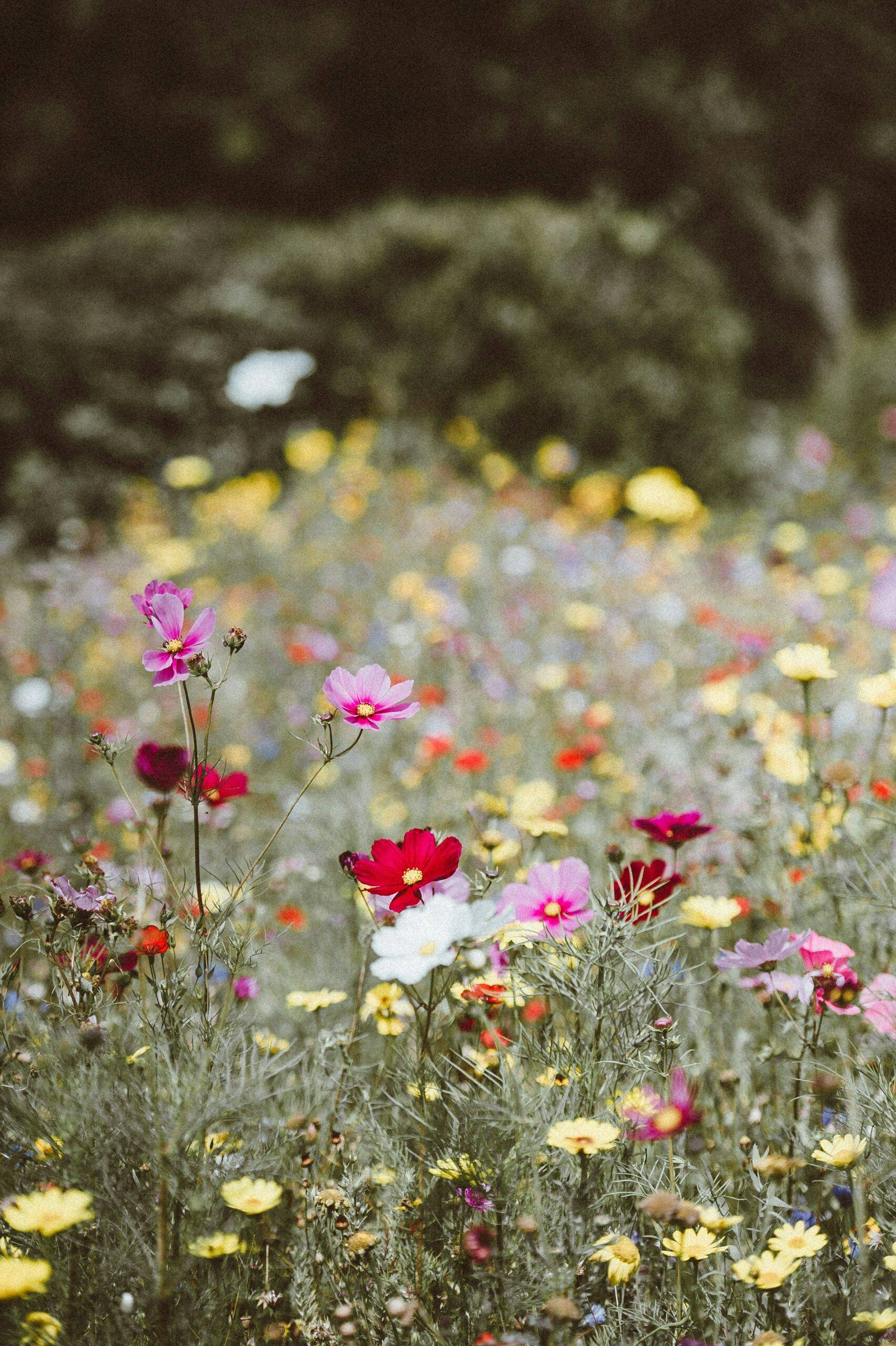Introduction to Edible Flowers
Edible flowers have graced the tables of culinary enthusiasts for centuries, not only adding a splash of color but also enhancing the flavor profile of numerous dishes. This section will delve into the rich history and usage of these botanical delights, as well as highlight the health benefits they bring to the table.
History and Usage
The incorporation of edible flowers into culinary practices dates back to ancient civilizations. For example, the Romans were known to use violets and roses in their cooking, while the Chinese have been incorporating chrysanthemums and daylilies into their dishes for millennia. Fast forward to the Victorian era, and one would find edible blooms decorating salads and desserts as a symbol of elegance and sophistication.
Today, the resurgence of edible pressed flowers has taken the culinary world by storm, particularly in the decoration of pressed flower cakes for special occasions such as birthdays and festivals. According to Healthline, these delightful garnishes can be found enhancing not only the visual appeal but also the flavor of dishes ranging from savory salads to sweet confections.
Health Benefits
Aside from their aesthetic contribution, edible flowers offer a bouquet of health benefits. They are rich in antioxidants, which are compounds known to combat oxidative stress and may reduce the risk of chronic diseases. Additionally, these florals are a source of various vitamins and minerals that contribute to overall well-being.
Research published by PubMed indicates that edible flowers are not just a feast for the eyes; they provide valuable nutrients such as proteins, fats, carbohydrates, and essential macro and microelements. These nutrients play a vital role in maintaining health and can be an excellent addition to a balanced diet.
| Nutrient | Benefit |
|---|---|
| Antioxidants | Combat oxidative stress |
| Vitamins | Support immune system and skin health |
| Minerals | Strengthen bones and improve metabolic processes |
For those interested in incorporating these nutritional powerhouses into their kitchen creations, edible dried flowers and pressed flowers for cakes offer a convenient and long-lasting option. Whether you’re adorning a pressed flower cake or sprinkling petals over a salad, edible flowers can elevate your culinary creations while providing healthful advantages.
Selecting the Right Flowers
Selecting the appropriate flowers is a fundamental step in incorporating these natural beauties into your culinary creations. When looking for the perfect blooms, it’s vital to consider not only their visual appeal but also their safety and edibility.
Popular Varieties
Several varieties of flowers are not only safe to eat but also bring a burst of color and subtle flavor to your dishes. Some popular options according to Healthline include:
- Roses: Known for their romantic connotations, roses have a slightly sweet, floral flavor. They are perfect for adorning cakes and desserts.
- Lavender: With its distinctive fragrance, lavender adds a unique, aromatic twist to sweets and drinks.
- Violets: These delicate flowers offer a sweet and floral essence, ideal for decoration.
- Marigolds: With a citrusy taste, marigolds are great for both savory and sweet dishes.
- Pansies: Pansies come in a variety of bright colors and have a mild, grassy flavor that works well with a range of desserts.
For those interested in decorating with these vibrant blooms, our articles on pressed flowers for cakes and edible pressed flowers for cakes offer more in-depth insights on how to use them.
Safety Precautions
When it comes to using flowers in food, safety should be your top priority. Here are a few precautions to ensure the flowers you select are safe for consumption:
- Confirm Edibility: Not all flowers are edible. Always verify the edibility of the variety you wish to use. Typically, dried edible flowers and edible dried flowers are safe options if sourced correctly.
- Pesticide-Free: Ensure that the flowers are free from pesticides and other contaminants. This could involve growing your own or sourcing from reputable suppliers.
- Allergies: Be aware of potential allergic reactions. It’s important to know your guests’ allergies when serving food with edible flowers.
Here’s a quick reference table for selecting safe flowers:
| Flower Type | Edibility | Notes |
|---|---|---|
| Roses | Yes | Ensure they’re pesticide-free |
| Lavender | Yes | Intense flavor, use sparingly |
| Violets | Yes | Sweet and decorative |
| Marigolds | Yes | Citrus-like taste, good for garnish |
| Pansies | Yes | Mild flavor, versatile in use |
Ensure you’re selecting the correct varieties by visiting our guide on edible pressed flower cake and edible dried flowers for cakes, which offer additional information and inspiration.
Preparing Edible Flowers
Before transforming your cakes into botanical masterpieces with edible pressed flowers, it’s critical to prepare the blooms properly. This ensures they are safe to eat and look their best when used as decoration.
Cleaning and Drying
To start off, edible flowers must be thoroughly cleaned to remove any traces of dirt, insects, or other contaminants. Gently wash the flowers in a bowl of water and then carefully pat them dry with a soft cloth or paper towel. For flowers with a high water content, such as pansies or violets, consider pre-drying or freezing before pressing to prevent wilting and to maintain their vibrant colors and shapes (Lola’s Cocina).
Here is a simple guide for cleaning and drying edible flowers:
- Fill a bowl with water and gently submerge the flowers.
- Swirl them around to dislodge any hidden dirt.
- Lift the flowers out and place them on a clean cloth or paper towel.
- Pat them dry gently but thoroughly to avoid bruising.
Pressing Techniques
Pressing flowers is a traditional method used to preserve their beauty for extended periods. The pressing technique involves placing the edible flowers between sheets of absorbent paper and then applying pressure, either using heavy books or a specialized flower press. The pressure must be maintained for a few days to a week, depending on the thickness and moisture content of the flowers (Lola’s Cocina).
To press edible flowers, follow these steps:
- Arrange clean and dry flowers between two layers of blotting paper.
- Place the blotting paper inside a heavy book, a flower press, or between two pieces of cardboard.
- Add weight on top to apply even pressure, such as additional books or weights.
- Leave the setup undisturbed for several days, checking occasionally to ensure the flowers are drying and pressing correctly.
Be mindful to store your pressed flowers in an airtight container away from direct sunlight to maintain their aesthetic appeal. When stored properly, pressed flowers can retain their form and color for up to a year, ready to be used for edible dried flowers for cakes or other culinary delights.
By following these steps, you can create a supply of beautiful and safe-to-eat decorations for your pressed flower cake or to add an elegant touch to salads and drinks. The art of pressing flowers opens up a world of creativity for your homemade birthday and festival food, ensuring that every dish is not only delicious but visually stunning.
Storing Pressed Flowers
After taking the time to select and prepare edible pressed flowers, proper storage is essential to maintain their aesthetic appeal and freshness for use in future culinary creations. Whether adorning a pressed flower cake or enhancing the visual appeal of salads and drinks, the longevity of your pressed flowers is crucial.
Best Practices
To ensure that your edible pressed flowers retain their flavor and freshness, it is important to store them correctly. Here are some best practices for storing your pressed flowers:
-
Airtight Containers: Use airtight containers to protect the flowers from moisture and air, which can degrade their quality. According to First Day of Home, airtight storage is key to preserving the flowers’ delicate characteristics.
-
Avoid Direct Sunlight: Store the container away from direct sunlight. Lola’s Cocina suggests that sunlight can cause the colors to fade and reduce the vibrancy of the flowers.
-
Cool, Dark Place: A pantry or cupboard that does not experience temperature fluctuations is ideal. Eat Your Flowers emphasizes that a cool, dark place helps maintain the quality and flavor of the flowers.
-
Labeling: Clearly label the container with the date of storage. This will help you keep track of the flowers’ shelf life and ensure you are using them when they are at their best.
By following these guidelines, you can extend the life of your pressed flowers, ensuring they are ready to enhance your culinary masterpieces when needed.
Shelf Life
The shelf life of pressed flowers can vary based on the type of flower and the conditions of storage. However, when stored properly, they can last for several months up to a year while maintaining their aesthetic qualities and flavors.
Here is a general guideline for the expected shelf life of pressed flowers:
| Storage Condition | Expected Shelf Life |
|---|---|
| Airtight container, cool, dark place | Several months to 1 year |
While these are general estimates, always inspect the flowers before use to ensure they have not deteriorated in quality. If you notice any signs of moisture, discoloration, or off-odors, it is best to discard the flowers.
For more information on how to incorporate dried and pressed flowers in your cakes, explore our range of articles including edible dried flowers, pressed flowers for cakes, and edible pressed flower cake decorating ideas. With proper storage, your edible pressed flowers for cakes can be a timeless addition to your baking repertoire.
Decorating with Edible Flowers
The use of edible flowers in culinary creations is a beautiful way to enhance both the visual appeal and the flavor of dishes. Especially for special occasions, incorporating these delicate florals can transform an ordinary cake or beverage into an extraordinary work of art.
Cakes and Cupcakes
When it comes to festivity and celebration, cakes and cupcakes adorned with edible pressed flowers make a stunning visual impact. These botanical embellishments offer a natural and elegant touch that can turn a simple dessert into a centerpiece. For those looking to create an edible pressed flower cake, the process is quite simple.
Begin by selecting flowers that complement the flavor profile of your cake or frosting. Next, carefully arrange the pressed flowers on the cake’s surface. You can either place them randomly for a more natural look or create a specific pattern or border. Remember to press the flowers gently onto the icing to ensure they adhere properly.
For cupcakes, a single small flower or petal can make a bold statement. Consider the color scheme of your icing and select flowers that will stand out or blend in, depending on the desired effect.
Here’s a quick guide to some popular edible flowers for cakes and their flavor profiles:
| Flower | Flavor Profile |
|---|---|
| Rose | Delicate, sweet |
| Lavender | Floral, slightly sweet |
| Pansy | Grass-like, mild |
| Hibiscus | Tart, cranberry-like |
| Calendula | Peppery |
These pressed flowers for cakes not only add a dash of color but may also introduce a subtle flavor that can elevate the overall tasting experience.
Salads and Drinks
Edible flowers aren’t just for desserts; they can also add a whimsical touch to salads and drinks. For instance, a salad sprinkled with colorful petals can make the dish visually striking and may add unexpected flavors. Whether it’s the peppery taste of nasturtiums or the citrusy zing of marigold, these accents turn a simple salad into an exciting dish.
In the realm of beverages, pressed flowers can be used to embellish cocktails, teas, and infused waters. A cocktail with a floating pansy or a glass of iced tea with a hint of chamomile presents not only a feast for the eyes but also engages the taste buds with their distinctive flavors.
Here are some edible flowers commonly used in drinks and their characteristics:
| Flower | Beverage Pairing |
|---|---|
| Chamomile | Teas, light cocktails |
| Borage | Cocktails, lemonades |
| Violet | Sweet cocktails, teas |
| Mint flowers | Mojitos, iced teas |
For those eager to experiment with these florals, it’s important to source edible dried flowers that are safe for consumption and free from pesticides. By doing so, you can confidently decorate your culinary creations with these beautiful and tasty additions.
Whether you’re adorning a festive birthday cake or adding a splash of color to a refreshing cocktail, edible pressed flowers offer endless possibilities for creativity in the kitchen. With a little preparation and an eye for design, anyone can incorporate these delightful elements into their culinary repertoire. For more inspiration, explore our articles on edible pressed flowers for cakes and edible dried flowers for cakes.
Nutritional Profile
Edible flowers not only add a touch of elegance to culinary creations but also offer a spectrum of nutritional benefits. Their inclusion in dishes provides more than just aesthetic appeal; it’s an infusion of vitamins and dietary fiber that can contribute to a well-rounded diet.
Vitamins and Antioxidants
Edible flowers are packed with an array of valuable nutrients, including antioxidants and vitamins that are essential for maintaining good health. These nutrients can help in neutralizing harmful free radicals in the body, supporting the immune system, and reducing the risk of chronic diseases.
For instance, flowers like marigold, nasturtium, and rose are known for their high vitamin C content, which is important for collagen synthesis and immune function. Additionally, certain edible flowers are known to contain other vitamins such as vitamin A, which is crucial for vision and skin health, and vitamin E, which serves as a fat-soluble antioxidant.
Here’s a table showcasing some common edible flowers and their antioxidant content:
| Edible Flower | Antioxidant Properties |
|---|---|
| Marigold | High in lutein and zeaxanthin |
| Nasturtium | Rich in vitamin C |
| Rose | Source of vitamin C and polyphenols |
| Lavender | Contains flavonoids and terpenes |
Data on specific vitamin content for each flower type can be obtained from nutritional databases or scientific journals.
Dietary Fiber Content
The dietary fiber content in edible flowers is particularly noteworthy, with a range that can significantly contribute to the daily recommended intake. According to a study published by PubMed, the fiber content in edible flowers like Magnolia and Calendula can vary widely, with Magnolia × soulangeana providing 13.22 g/100 g and Calendula officinalis offering a substantial 62.33 g/100 g.
Edible flowers also provide both soluble and insoluble dietary fiber, which are important for digestive health. Soluble fiber helps to slow digestion and can aid in lowering cholesterol levels, while insoluble fiber assists in adding bulk to stool and preventing constipation.
| Edible Flower | Insoluble Dietary Fiber (g/100 g) | Soluble Dietary Fiber (g/100 g) |
|---|---|---|
| Magnolia × soulangeana | 8.69 | – |
| Calendula officinalis | 57.54 | – |
| Syringa vulgaris L.-white flowers | – | 1.35 |
| Centaurea cyanus L | – | 7.46 |
Note: The “-” indicates that the specific data for insoluble or soluble fiber content was not available for these flowers in the source provided.
Incorporating edible flowers into one’s diet, such as using edible pressed flowers for cakes or adding them to salads and drinks, can be a delightful way to enhance both the visual presentation and the nutritional profile of food. For those interested in exploring the use of edible flowers in baking, consider reading about pressed flower cake or edible dried flowers for cakes for inspiration and guidance.
Sourcing and Sustainability
Organic and Pesticide-Free
For food enthusiasts looking to incorporate edible pressed flowers into their cake creations, sourcing flowers that are organic and free from pesticides is a critical step. These blossoms should be obtained from suppliers that guarantee the absence of harmful chemicals, which is essential for the safety and quality of your edible decorations.
Organic flowers are cultivated without synthetic pesticides, fertilizers, or genetically modified organisms, aligning with sustainable farming practices that are better for the environment and consumers. Using these organic blooms in your culinary endeavors ensures that your pressed flower cake is not only aesthetically pleasing but also safe to eat.
To verify the organic status of the flowers, it’s recommended to look for certification labels or to purchase directly from trusted organic farms. Various sources like Magnolia’s Yard emphasize the importance of using pesticide-free flora in their offerings. Additionally, Healthline stresses the necessity of ensuring that the flowers are uncontaminated and suitable for consumption.
Supporting Local Growers
In addition to sourcing organic flowers, supporting local growers can have a significant impact on sustainability. By purchasing edible dried flowers from local farms, you contribute to the local economy, reduce carbon footprints associated with transportation, and often receive fresher products.
Local growers are more likely to provide a diverse range of flower species, including some unique varieties that may not be available from larger commercial sources. This diversity can add an array of colors and flavors to your edible pressed flower cake, making it truly one-of-a-kind.
When selecting local suppliers, it’s beneficial to develop relationships with the growers to gain insights into their farming practices. This direct communication ensures that the pressed flowers for cakes meet your standards for organic and sustainable sourcing.
By consciously choosing organic, pesticide-free, and locally-sourced edible flowers, you not only elevate the quality of your cakes but also contribute to a healthier ecosystem and a more robust local agriculture sector. Whether you’re a home baker or a professional pastry chef, these environmentally friendly choices can lead to delectable, safe, and responsible cake decorations that will impress any guest.




Leave a Reply